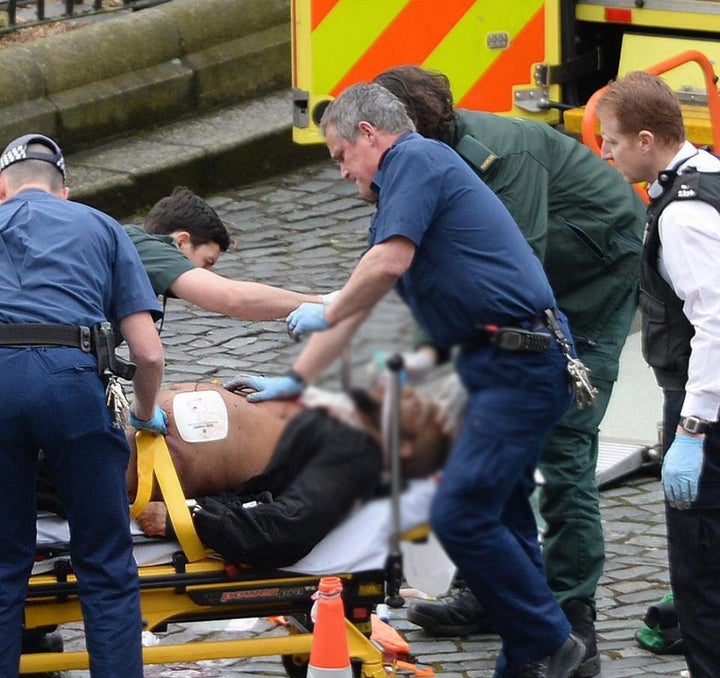Prime Minister Theresa May has revealed more details about the London attack suspect who killed three and injured 40 others on Wednesday.
Police have now named him as 52-year-old Khalid Masood, who died after killing a police officer at Parliament alongside two others on Westminster Bridge.
May confirmed he had been known to the intelligence services, but suggested he was not currently under surveillance.

The PM told the House of Commons the attacker had been investigated some years ago over violent extremism but was “peripheral” figure.
“He was not part of the current intelligence picture,” she added. “There was no prior intelligence of his intent or the plot.”
May said it was believed he acted alone and the police have no reason to believe there are imminent further attacks on the public.
Islamic State has claimed responsibility for the attack which it claimed was carried out by one of its soldiers, Reuters and AP said the group’s Aaamaq news agency reported.
Eight people have been arrested and six addresses raided in London, Birmingham and elsewhere in connection with the attack, Mark Rowley, the Met’s senior anti-terror officer, said.

Armed police swooped on a flat in Hagley Road in the Edgbaston area of Birmingham overnight.
The second floor flat and surrounding area were cordoned off. Roads have now reopened but police remain on the scene.
Khalid Masood named as London attacker
The London attacker has been named by the Metropolitan Police as Khalid Masood. May earlier confirmed he was British born and known previously to the intelligence services.
The 52-year-old was from the West Midlands and was known to use a number of aliases.
Scotland Yard said: “Masood was not the subject of any current investigations and there was no prior intelligence about his intent to mount a terrorist attack.
“However, he was known to police and has a range of previous convictions for assaults, including GBH, possession of offensive weapons and public order offences.
“His first conviction was in November 1983 for criminal damage and his last conviction was in December 2003 for possession of a knife.
“He has not been convicted for any terrorism offences.”
Reports on Wednesday evening mistakenly identified the attacker as Trevor Brooks, also known as Abu Izzadeen. It was later revealed that Brooks is believed to be in jail serving a two-year sentence for breaching an anti-terror order.
The Metropolitan Police would only name the attacker when to do so would not jeopardise the ongoing investigation, a Scotland Yard source said earlier.
Dr Anthony Richards, reader in terrorism studies at the University of East London, told The Huffington Post UK that it’s still not known if the suspect was subject to one of the hundreds of ongoing counter-terror investigations.
He said: “It’s all about prioritisation. In 2005, there were two individuals who were under the radar and who were perhaps suspected of other activity, rather than terrorism.
“Some [subjects of investigation] will have greater priority than others. Whether it means that the person yesterday was on the periphery of the five-hundred or so ongoing counter-terror investigations, or not, is still not clear.”
